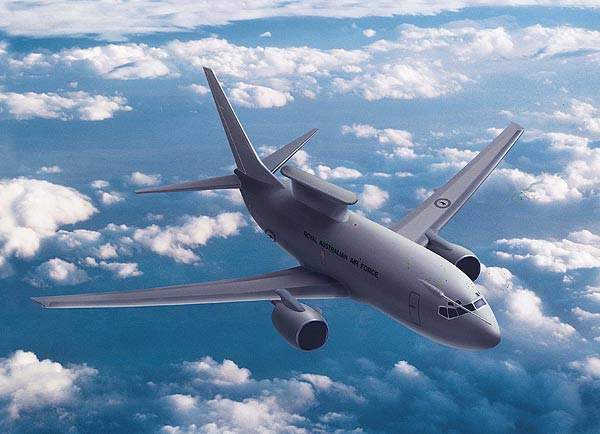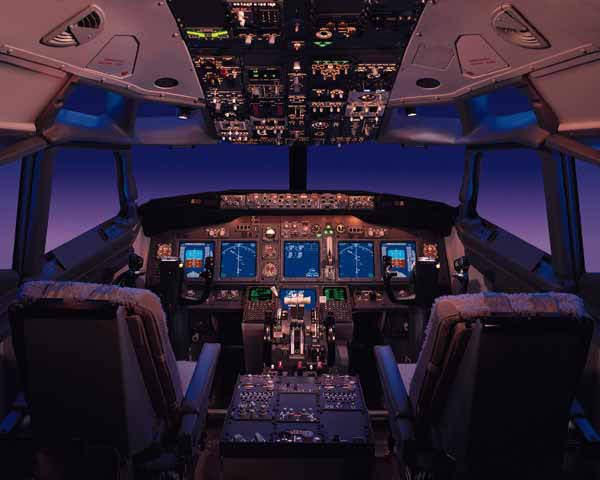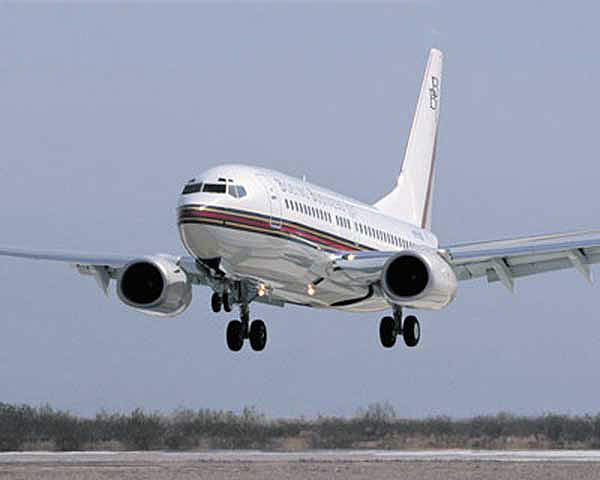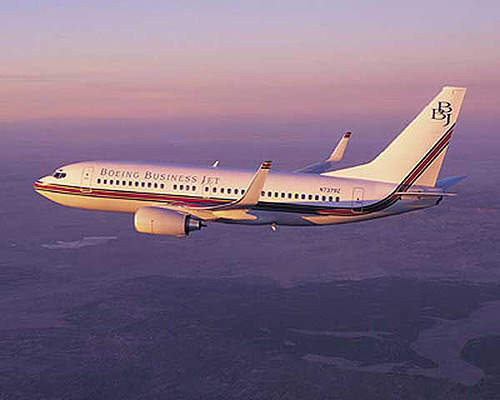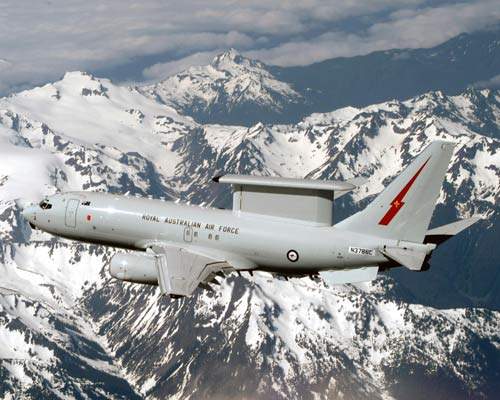The Commonwealth of Australia placed a contract worth more than $1bn with Boeing in December 2000 for the development and supply of the 737 airborne early warning and control (AEW&C) programme, Project Wedgetail.
Boeing is the prime contractor for the programme and team partners include Northrop Grumman’s Electronics Sensors and Systems, Boeing Australia and BAE Systems Australia.
The initial contract was for four AEW&C systems with options for up to three additional systems. The contract also provides a mission support segment and the associated ground-based support segments for flight and mission crew training. In May 2004, Australia exercised options to purchase an additional two aircraft.
Boeing Australia is responsible for providing systems, engineering and leading product support teams. In January 2010, Boeing was awarded $600m contract to provide project management and engineering services for the AEW&C programme for five years. BAE Systems Australia is to supply the electronic support measures and electronic warfare self-protection systems. Qantas Airways was awarded the contract for maintenance of the aircraft. The first two aircraft were completed by Boeing in the US; the remainder will be modified in Australia.
The first airframe for modification was rolled out in December 2002, ready for modification and installation of the radar and systems.
Then in May 2004, first flight of the aircraft with the radar and mission systems took place at the Boeing Field in Seattle in May 2004. Performance and flight handling tests were completed in July 2005 and the initial aircraft for modification in Australia arrived in January 2006.
The first two aircraft, capable of peacekeeping and training roles, were delivered to the Royal Australian Air Force (RAAF) on 26 November 2009. These two aircraft entered into service with RAAF in April 2010. The third aircraft was sent in May 2010 and the fourth in December 2010. In September 2011, the fifth aircraft entered service and the sixth and final aircraft was delivered in May 2012.
737 AEW&C orders
In May 2002, the Turkish Government signed a $1.6bn contract with Boeing for four 737 AEW&C systems, with options on a further two. The sale received US Government approval in September 2003. Boeing is modifying the first and Tusas Aerospace Industries (TAI) of Ankara the other three. The first aircraft for local modification arrived in March 2006.
The first flight of the Peace Eagle was in September 2007, while the first aircraft modified by TAI flew in July 2008. Modification of the second aircraft took place at Ankara and Turkey in June 2008 and the mission system and flight checks were finished by the end of 2008.
The first 737 Peace Eagle was delivered to the Turkish Air Force in February 2014, with the second and third aircraft arriving in May 2014 and September 2014 respectively.
In August 2006, the 737 AEW&C was selected as ‘sole candidate’ for South Korea’s E-X requirement for four surveillance aircraft to be delivered by 2012. The $1.6bn contract was awarded to Boeing in November 2006.
Three of four 737 AEWC surveillance aircraft, called Peace Eye, were delivered to South Korea by May 2012. The fourth and last aircraft was delivered in October 2012.
Boeing 737-700 aircraft
The aircraft selected for the Wedgetail is the Boeing 737-700 increased gross weight variant (IGW), based on the airframe of the Boeing Business Jet. It is flown by two flight crew with between six and ten mission crew members.
The machine operates at an altitude of 30,000ft to 40,000ft with a maximum operating altitude of 41,000ft. It has state-of-the-art flight deck, avionics and navigation equipment. An extensive communications suite is also included, which has three HF, eight VHF/UHF communications systems together with Link 4A and Link 11 systems.
Engines of the Boeing 737-700
The aircraft is equipped with two CFM International CFM56-7B24 engines, each rated at 118kN.
It has a flying boom receptacle and a fixed probe providing dual in-flight refuelling capability. The CFM56-7B24 engine is also equipped with dual annular combustor for low emissions capability, common core and low pressure turbine.
The aircraft reduces fuel burn using innovative thermodynamic cycle.
Mission avionics from BAE Systems North America
The Advanced Systems Division of BAE Systems North America is supplying major elements of the aircraft’s mission avionics, including cockpit tactical mission displays, command and control consoles and mission computers.
There are six multirole / multipurpose mission consoles with ultra-high resolution flat panel tactical displays installed in the aircraft. Production of the equipment is being carried out at BAE’s Advanced Systems Greenlawn facility.
The computers use advanced signal processing algorithms to analyse, categorise and prioritise data. This data is presented to the mission crew on an integrated situation display on the system console.
The open system architecture ensures the systems can be upgraded and extended. The AEW&C Wedgetail aircraft is compatible and interoperable with the E-3 and 767 AWACS airborne warning and control system aircraft.
AEW&C Peace Eagle aircraft, which are designated for Turkey, are being fitted with EADS Defence Electronics multisensor integration software.
Radar of the AEW&C aircraft
The MESA multirole electronically scanned array radar is being supplied by Northrop Grumman Electronic Sensors and Systems Division, based in Baltimore. Tenix Defence Systems of Adelaide, Australia, is supplying some components and modules for the radar. MESA provides 360 degree coverage and a range of more than 200nm.
The system’s variable track update rates and dedicated tracking modes allow the operator to track allied and hostile high performance aircraft while continuously scanning the area of operations.
This scan features an assembly of transmit and receive modules, operating at L-band and sharing three apertures to provide the 360 degree coverage. The radar system provides a high level of operational capability because the system is dynamically structured to match the changing mission requirements.
When an operator requires a long range view of a selected sector of the operational area, then the relevant system modes can be selected to initiate the search of that sector at more than twice the nominal uniform surveillance range.
An integrated identification friend or foe system (IFF) is combined with the primary radar and uses the same aperture as the primary radar, which avoids target correlation problems. The IFF system has an operational range of more than 300nm.
The distinctive ‘top hat’ radome provides a low aerodynamic drag profile while meeting the requirement for fore and aft coverage. Two large strakes are fitted on the underside at the rear section of the fuselage.
The strakes provide an aerodynamic balance to offset the effect of the MESA radome on the upper surface of the fuselage. In January 2005, flight tests of the aircraft were temporarily suspended while the upper surface of the radome was raised by about 100mm, to improve radar performance.
Countermeasure technology on the Wedgetail
BAE Systems Australia is responsible for the electronic warfare self protection and electronic support measures subsystems for the Wedgetail.
Elta Electronics of Israel was selected to supply the advanced ESM/ELINT electronic support measures system.
The system provides 360 degree instantaneous surveillance and is similar to Elta ESM systems on RAAF P-3C Orion maritime patrol aircraft.
In February 2002, Northrop Grumman Electronic Sensors was awarded the contract to provide the AN/AAQ-24(V) Nemesis directional infra-red countermeasures (DIRCM) system, augmented with the Viper solid state multiband laser.
Performance of Boeing’s aircraft
The aircraft’s maximum take-off weight is 171,000lb (77,110kg). It flies at an altitude of 30,000ft-40,000ft with a maximum operating altitude of 41,000ft. The time on station is estimated at more than nine hours.
The maximum dash and normal cruise speed of the aircraft are 955km/h and 759km/h respectively. The range is 7,040km and the service ceiling is 12,500m.
Global Military Aircraft Market 2011-2021
This project forms part of our recent analysis and forecasts of the global military aircraft market available from our business information platform Strategic Defence Intelligence. For more information click here or contact us: EMEA: +44 20 7936 6783; Americas: +1 415 439 4914; Asia Pacific: +61 2 9947 9709 or via email.

